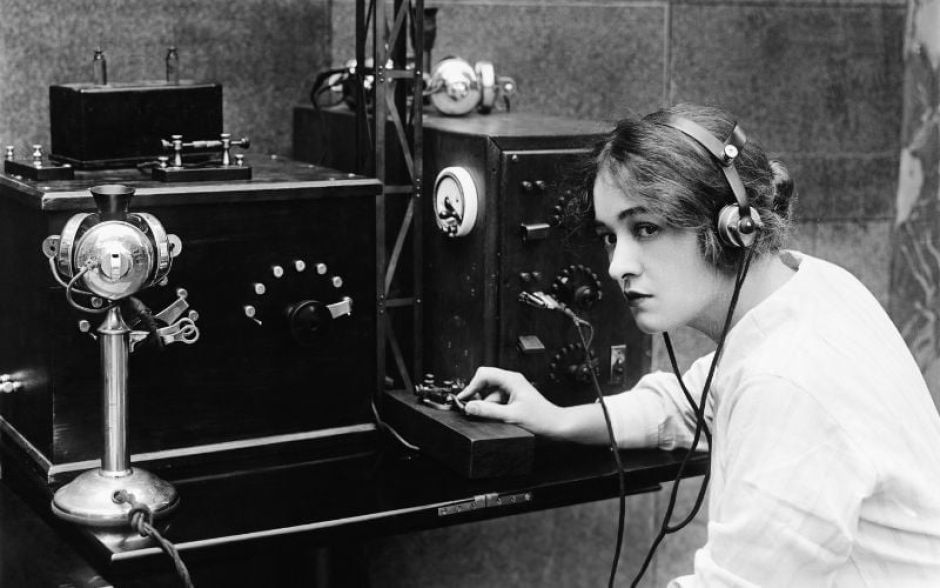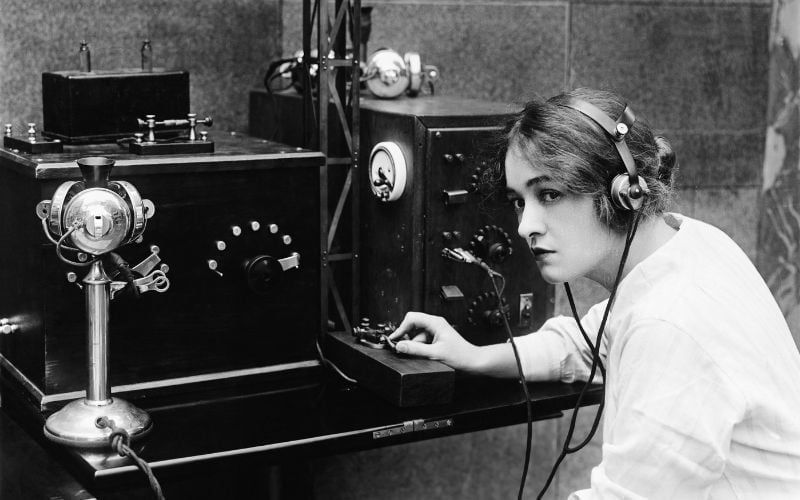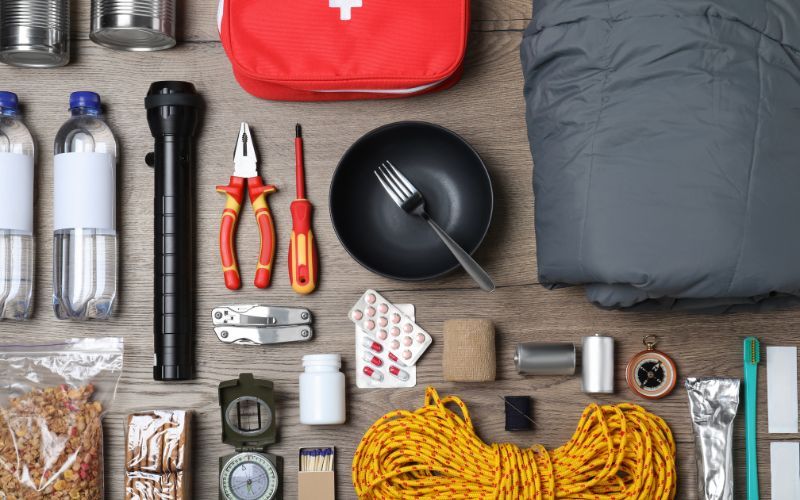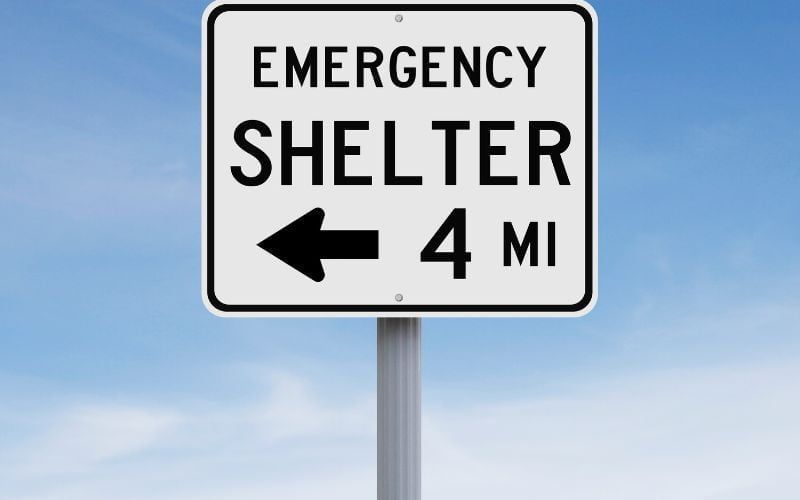
Signal Devices: Enhancing Safety and Communication in Critical Situations 2023
Signal Devices – In a world where unexpected emergencies, outdoor adventures, and survival situations are part of life’s unpredictability, having reliable means of communication and signaling can be a matter of life and death. Enter Signal Devices, a crucial sub-category of Safety & First Aid, designed to enhance safety, facilitate communication, and ensure help is never out of reach.
This comprehensive guide delves into the world of Signal Devices, exploring their significance in various scenarios, showcasing the diverse types available, and providing expert insights on choosing the right devices to meet your specific needs. Whether you’re an outdoor enthusiast, an adventurer, or someone focused on emergency preparedness, understanding Signal Devices and having the appropriate ones at your disposal can be the key to a safer and more secure journey.

Table of Contents
The Significance of Signal Devices
The Significance of Signal Devices extends far beyond being mere gadgets; these devices are lifelines that have the potential to save lives and drastically improve safety and communication in critical situations. Let’s delve deeper into why Signal Devices hold such paramount importance:

- Emergency Signaling:Signal Devices are primarily designed to serve as beacons of distress in emergency situations. Whether you’re lost in the wilderness, stranded at sea, or facing a disaster, these devices are your means of alerting others to your predicament. They emit visible or audible signals that can guide rescuers to your location swiftly, significantly reducing response time.
- Communication in Isolation:In remote or isolated environments where conventional means of communication may fail, Signal Devices act as a lifeline to the outside world. They bridge the gap between you and help, ensuring that you can send out a call for assistance even when there’s no cellular coverage. This capability is invaluable for outdoor enthusiasts exploring off-the-grid locations or travelers in remote areas.
- Enhancing Visibility:In low-light conditions or during search and rescue operations, visibility can make all the difference. Signal Devices like strobe lights, flares, and reflective materials ensure that you’re easily spotted by search teams and rescue personnel. This enhanced visibility is crucial for swift and efficient rescue operations, especially when time is of the essence.
- Navigation and Wayfinding:Some Signal Devices, such as compasses, GPS locators, and navigational beacons, assist with navigation and wayfinding. They help individuals maintain their bearings, stay on course, and prevent disorientation, particularly in unfamiliar and challenging terrains.
- Aviation and Marine Safety:For pilots and mariners, Signal Devices are vital aspects of safety. Emergency beacons, life rafts equipped with signaling equipment, and distress flares are essential for alerting authorities to critical situations at sea or in the sky. These devices are critical for maritime and aviation safety regulations.
- Disaster Preparedness:In urban settings, Signal Devices serve as critical tools for disaster preparedness. Emergency radios, walkie-talkies, and personal locator beacons enable communication and coordination during evacuations, natural disasters, and crisis situations. They ensure that individuals and communities can stay informed and receive assistance when needed.
- Peace of Mind:Perhaps one of the most significant advantages of Signal Devices is the peace of mind they provide. Whether you’re embarking on a solo adventure, a family camping trip, or simply navigating everyday life, knowing that you have the means to call for help or signal your location in an emergency enhances your mental and emotional well-being. This peace of mind can be invaluable in reducing stress and anxiety during challenging situations.
In summary, the significance of Signal Devices lies in their ability to facilitate communication, enhance safety, and serve as a lifeline in emergencies. These devices empower individuals to signal for help, stay on course, and communicate effectively, regardless of the circumstances or challenges they face. Whether you’re an outdoor enthusiast, a traveler, or someone focused on emergency preparedness, Signal Devices are tools that can make the difference between vulnerability and resilience in critical situations. Preparedness is not a state of fear; it’s a state of readiness, and Signal Devices are key components of that readiness.
Types of Signal Devices
Signal Devices encompass a wide range of equipment tailored to specific needs in safety and communication. Here’s an in-depth exploration of various types:

Visual Signaling:
- Strobe Lights: High-intensity, flashing lights visible over long distances.
- Flares: Pyrotechnic devices that emit bright, burning flames for signaling.
- Signal Mirrors: Mirrors with aiming aids to reflect sunlight for long-range signaling.
- Reflective Materials: Tape, patches, and clothing that enhance visibility.
Audible Signaling:
- Whistles: Loud, high-pitched whistles for short-range signaling.
- Horns: Audible horns used on boats and in emergencies.
- Sirens: Electronic sirens that emit loud, attention-grabbing sounds.
- Emergency Whistle Radios: Combine whistles with two-way radio communication.
Navigation and Location Devices:
- Compasses: Essential for orientation and navigation.
- GPS Locators: Provide precise location information via satellite signals.
- Personal Locator Beacons (PLBs): Satellite devices that send distress signals with location data to search and rescue authorities.
- EPIRBs (Emergency Position-Indicating Radio Beacons): Marine-specific distress beacons for use at sea.

Communication Devices:
- Emergency Radios: Hand-crank or solar-powered radios for receiving emergency broadcasts.
- Walkie-Talkies: Short-range two-way radios for communication in remote areas.
- Satellite Phones: Global communication devices that work in areas with no cellular coverage.
- RescueME PLB1 : A personal locator beacon for emergencies.
Marine Signaling Devices:
- Distress Flares: Pyrotechnic flares designed for marine emergencies.
- Life Rafts with Signaling Equipment: Inflatable life rafts equipped with signaling devices for marine survival.
- VHF Marine Radios: For communication and distress signaling at sea.
Choosing the Right Signal Devices
Choosing the Right Signal Devices is a crucial step in enhancing your safety and communication capabilities, whether you’re an outdoor enthusiast, a traveler, or simply someone focused on emergency preparedness. The effectiveness of these devices depends on various factors, and making informed decisions is essential. Here, we provide an in-depth look at the considerations for choosing the right Signal Devices:

Intended Use:
The first and foremost consideration is the intended use of the Signal Devices. Different devices are designed for specific purposes, such as emergency signaling, navigation, or communication. Clarify your primary purpose to ensure you select the right tool for the job. For example:
- Emergency Signaling: If your primary need is to signal for help in emergencies, devices like strobe lights, flares, signal mirrors, and whistles are designed for this purpose.
- Navigation and Wayfinding: If you need assistance with navigation, consider compasses, GPS locators, and navigational beacons.
- Communication: For communication needs, devices like emergency radios, walkie-talkies, and satellite phones are suitable choices.
Environment and Terrain:
Consider the environments and terrains you are likely to encounter. Different Signal Devices are better suited to specific conditions. For instance:
- Wilderness: If you’re an outdoor enthusiast or adventurer, you may need devices that work well in remote, rugged, and potentially wet environments. Look for rugged, weather-resistant options that can withstand the elements.
- Urban: In urban settings, you might require devices for disaster preparedness or communication during emergencies. Consider devices that are easy to use in urban environments, where structures can affect signal transmission.
Range and Coverage:
Evaluate the range and coverage of the Signal Devices, which are critical for communication. Ensure that the device’s range matches your communication needs. For example:
- Short-Range: Walkie-talkies are suitable for short-range communication within a group, making them ideal for activities like hiking or camping.
- Long-Range: Satellite phones provide global coverage and are suitable for communication in remote areas with no cellular coverage.
Battery Life and Power Source:
Examine the battery life and power source of the Signal Devices. Depending on the duration of your activities or the potential length of an emergency situation, battery life becomes a crucial consideration. Factors to keep in mind include:
- Battery Life: Choose devices with battery life that aligns with your expected usage duration. Some devices come with long-lasting batteries or options for rechargeable batteries.
- Power Source: Assess whether the device relies on standard batteries, rechargeable batteries, or alternative power sources like solar or hand-crank charging.
Ease of Use:
Especially in high-stress situations, ease of use is vital. Select Signal Devices that are user-friendly and intuitive. Complex or difficult-to-operate devices can be frustrating and potentially ineffective when you need them most.
Durability and Weather Resistance:
Consider the durability and weather resistance of the devices, especially if you plan to use them in challenging conditions. Look for devices that can withstand exposure to rain, snow, extreme temperatures, and physical stress. Robust, rugged designs are essential for wilderness use.
Compatibility:
Ensure that your chosen Signal Devices are compatible with other devices and communication systems if needed. For example, if you’re using a GPS locator, make sure it can interface with mapping software or emergency services.
Regulatory Compliance:
In some situations, such as aviation and marine activities, Signal Devices must comply with specific regulations and requirements. Verify that your chosen devices meet these standards to ensure legal and safe use.
Maintenance:
Understand the maintenance requirements of your selected Signal Devices. Some may require regular battery replacement, calibration, or software updates. Being proactive about maintenance ensures that your devices remain in optimal working condition when you need them.
In conclusion, choosing the right Signal Devices is a critical aspect of enhancing your safety and communication capabilities. Consider your intended use, the environment you’ll be in, range and coverage, battery life, ease of use, durability, compatibility, and regulatory compliance.
By making informed decisions and selecting Signal Devices that align with your needs and circumstances, you’ll ensure that you have reliable tools at your disposal for signaling for help, staying on course, and communicating effectively in emergencies or outdoor adventures. Preparedness is about making choices that empower you, enhance your safety, and provide peace of mind in challenging situations.
Conclusion – Signal Devices
Signal Devices are indispensable tools that bridge the gap between safety and uncertainty in our lives. They empower individuals to communicate, signal for help, and navigate in diverse environments, from the wilderness to urban settings. In this comprehensive guide, we’ve explored the significance of Signal Devices, delved into the various types available, and provided expert insights on choosing the right devices for your specific needs.
Preparedness is not a state of fear; it’s a state of readiness. Whether you’re an adventurer, a mariner, or simply someone who values safety and communication, remember that Signal Devices are your lifelines in times of need. By selecting the appropriate devices and staying informed about their use, you ensure that help is never far away, and safety is always within reach. Your peace of mind, safety, and ability to communicate in emergencies depend on making the right choices when it comes to Signal Devices.



